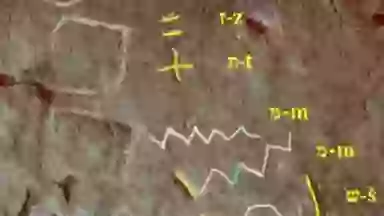Decoding a ‘Moses’ Inscription: Controversial Claim from Serabit el-Khadim
A Bold Claim at an Ancient Mine
Researcher Michael Bar-Ron has sparked debate with his interpretation of 3,800-year-old Proto-Sinaitic inscriptions at Serabit el-Khadim, an ancient Egyptian turquoise mine in the Sinai Peninsula. In a 213-page proto-thesis submitted to Ariel University, Bar-Ron claims two inscriptions—Sinai 357 and 361—contain the phrase “zot m’Moshe” (Hebrew for “This is from Moses”) and “NʾUM MŠ” (“A saying of MŠ”), suggesting they were authored by or dedicated to the biblical Moses. Found near Mine L, these carvings, dating to Egypt’s 12th Dynasty (circa 1800 BCE), are among the earliest known alphabetic scripts, etched by Semitic-speaking laborers, per Daily Mail. Bar-Ron’s eight-year study, using high-resolution images and 3D scans from Harvard’s Semitic Museum, links the inscriptions to Moses’ opposition to the cow-goddess Baʿalat and promotion of the deity El, aligning with the Exodus narrative of rejecting the golden calf.
Religious Conflict in the Inscriptions
The inscriptions reveal a clash between worshippers of Baʿalat (equated with Egypt’s Hathor) and El, a Northwest Semitic deity tied to early Israelite faith. Bar-Ron notes that some Baʿalat dedications were defaced by El-worshippers, with a burnt temple at the site suggesting a violent rejection of her cult, per Patterns of Evidence. References to slavery, overseers, and a “Gate of the Accursed One” (possibly Pharaoh’s entrance) hint at resistance against Egyptian authority, echoing Exodus themes. Bar-Ron told The Humble Skeptic that the inscriptions’ poetic style and linguistic ties to early Hebrew suggest a single scribe, possibly Moses, trained in Egyptian hieroglyphs, consistent with his biblical upbringing in Pharaoh’s court. Nearby artifacts, like the Stele of Reniseneb, indicate a Semitic presence, potentially linked to figures like Joseph, per Arkeonews.
Scholarly Support and Skepticism
Bar-Ron’s advisor, Dr. Pieter van der Veen of Johannes Gutenberg University, supports the reading, stating, “You’re absolutely correct, I read this as well, it is not imagined!”. Egyptologist David Rohl also endorsed the findings, per The Jerusalem Post. However, Dr. Thomas Schneider of the University of British Columbia dismissed the claims as “completely unproven and misleading,” warning that Proto-Sinaitic’s complex script makes such interpretations risky. X posts reflect this divide: @JacobIsrael71 celebrated the discovery, while @REVENANTRISE and @IBR_NJI argued it stretches evidence, noting the 500-year gap between the inscriptions (1800 BCE) and Moses’ traditional timeline (circa 1300 BCE). Critics like Orly Goldwasser, cited in The New York Times, argue the script’s Canaanite origins lack direct biblical ties.
Historical and Biblical Implications
If accurate, the inscriptions could be the first archaeological evidence of Moses, challenging the absence of extra-biblical records for his existence. The site’s proximity to proposed locations for Mount Sinai, like Jebel Saniyah, adds intrigue, per Ancient Origins. References to El, names like Levi and Issachar, and a possible Joseph connection (via vizier Ankhu) suggest a Semitic elite presence under Pharaoh Amenemhat III, per Arkeonews. Yet, the inscriptions’ age predates most biblical chronologies, and prior claims, like Douglas Petrovich’s 2016 translation, faced rejection, per Humble Skeptic. Bar-Ron insists he avoided sensationalism, seeking alternative interpretations, but mainstream scholars demand peer-reviewed validation, expected later in 2025 via 3D model releases, per Greek Reporter.
A Tantalizing but Unproven Link
The Serabit el-Khadim inscriptions offer a glimpse into a Semitic alphabetic culture, but their link to Moses remains speculative. The defaced Baʿalat carvings and slavery references resonate with Exodus, yet the script’s complexity and temporal disconnect fuel skepticism. As Bar-Ron prepares for academic scrutiny, the debate, amplified by X posts like @PremKumarMeen12’s, underscores the challenge of tying archaeological finds to biblical figures. Further scans by the Patterns of Evidence team may clarify the carvings’ intent, but for now, the “Moses” inscription remains a provocative hypothesis, not proof, of the Bible’s historicity.


